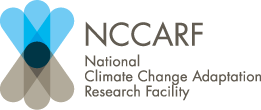You are here
Where are adaptation pathways leading us?
You might be surprised to learn that adaptation pathways are still an active area of research and development, with new innovations happening all the time. CoastExchange spoke to one of Australia’s leading adaptation pathways researchers, Dr Yiheyis Maru from CSIRO.
How long have you been working on adaptation pathways?
I have been working on resilience concepts since 2001 and started investigating adaptation pathways in 2009. There are strong links between resilience and adaptation pathways and it was a natural transition.
What evolutions have you seen over that time?
We wanted to find ways to bring new ideas into how we try to manage natural and livelihood systems. Originally the focus was on the efficiency of a system but we realised that people had to manage for resilience rather than just efficiency. Resilience is about the capacity to absorb shocks. Pathways highlight how systems need to incorporate changes to remain resilient as the external environment changes and needs to face new or additional shocks, particularly those arising from climate change.
We have understood that pathways are not a one off planning process. They are part of a method to set a long-term goal for where you are heading, but at the same time to have a short-term plan that is able to change based on changes in triggers and drivers.
What new developments are you seeing?
The group in CSIRO is working on the idea of how decisions are made. Much of the early work has looked at decisions that are largely influenced by knowledge or information. But we realised that decisions are also based on values and the rules of the system. The VRK (Values, Rules, Knowledge) framework is the idea that captures this concept.
We are also working on the concept of Resilience, Adaptation Pathways and Transformation Assessment (RAPTA). This treats the three concepts as a continuum of type of adaptation change. It was commissioned by the Global Environment Fund who wanted to integrate these concepts into normal decision-making. It is a continuum of approaches that helps us understand what we need to do to maintain a system, modify that system to adapt, or transform that system to a new state given the scale of drivers the system needs to contend with. This is being piloted in Africa and Asia through the UNDP.
More information:
CSIRO Enabling Adaptation group
Resilience, Adaptation pathways and Transformation Assessment (RAPTA)
Are you using adaptation pathways?
Do you intend to revisit them in the future and see how you are tracking?




